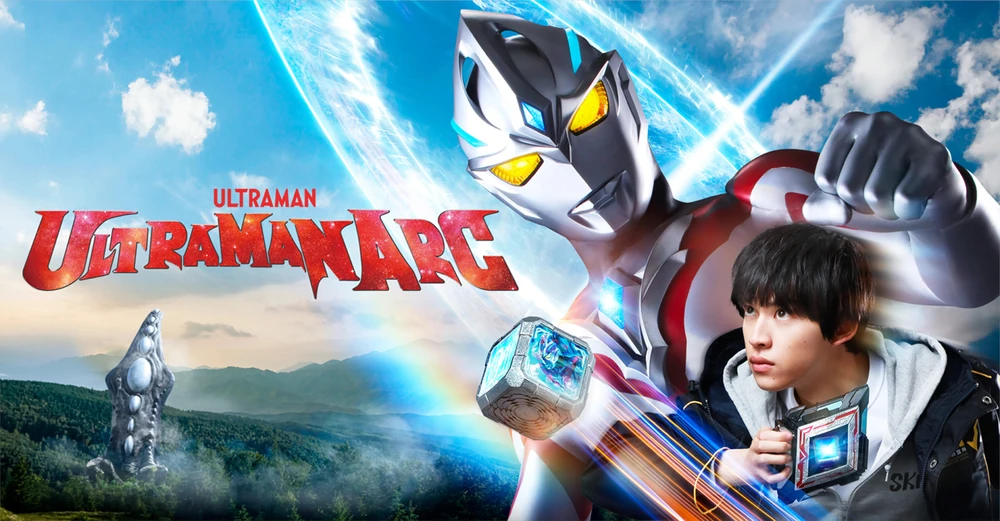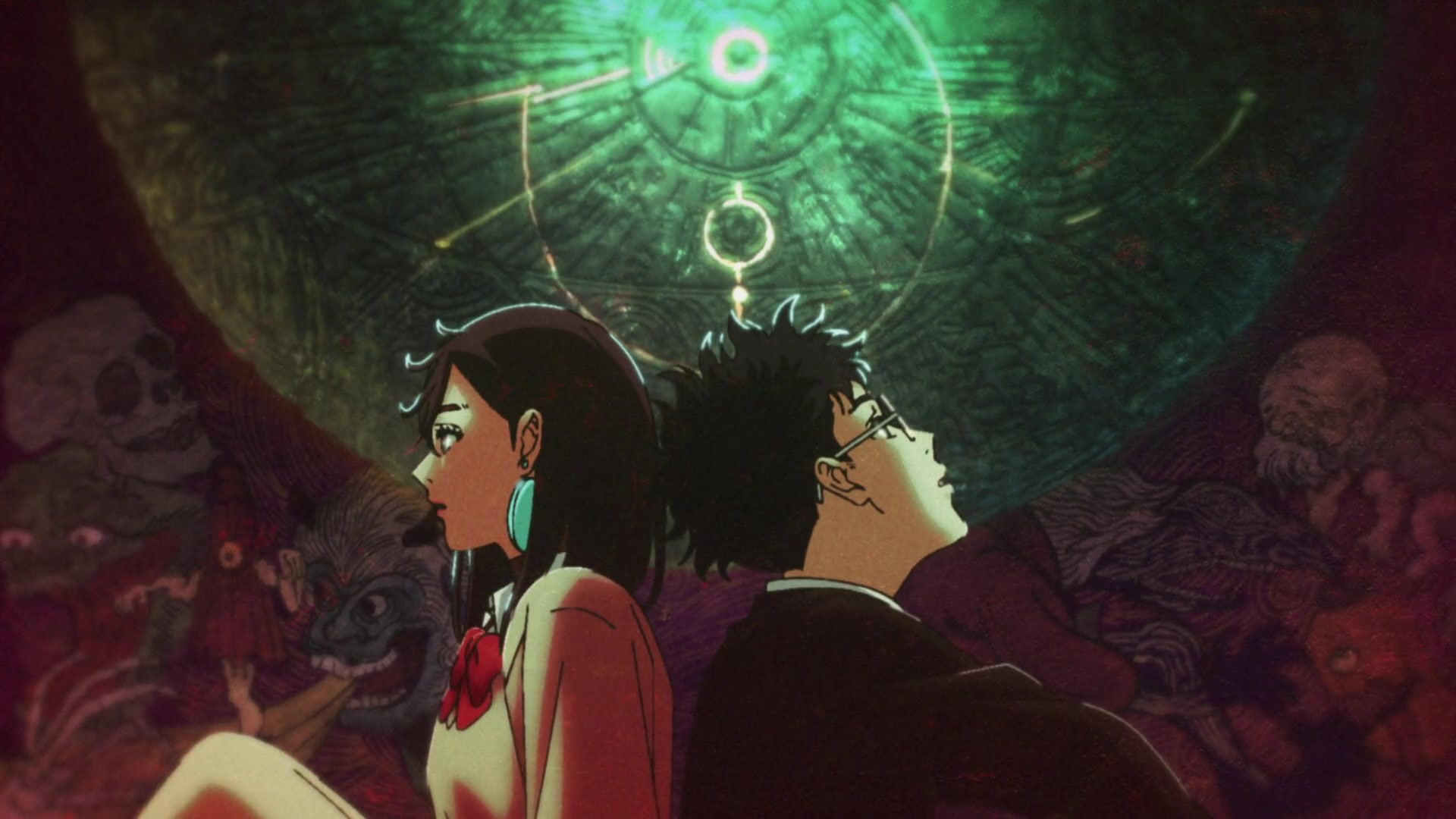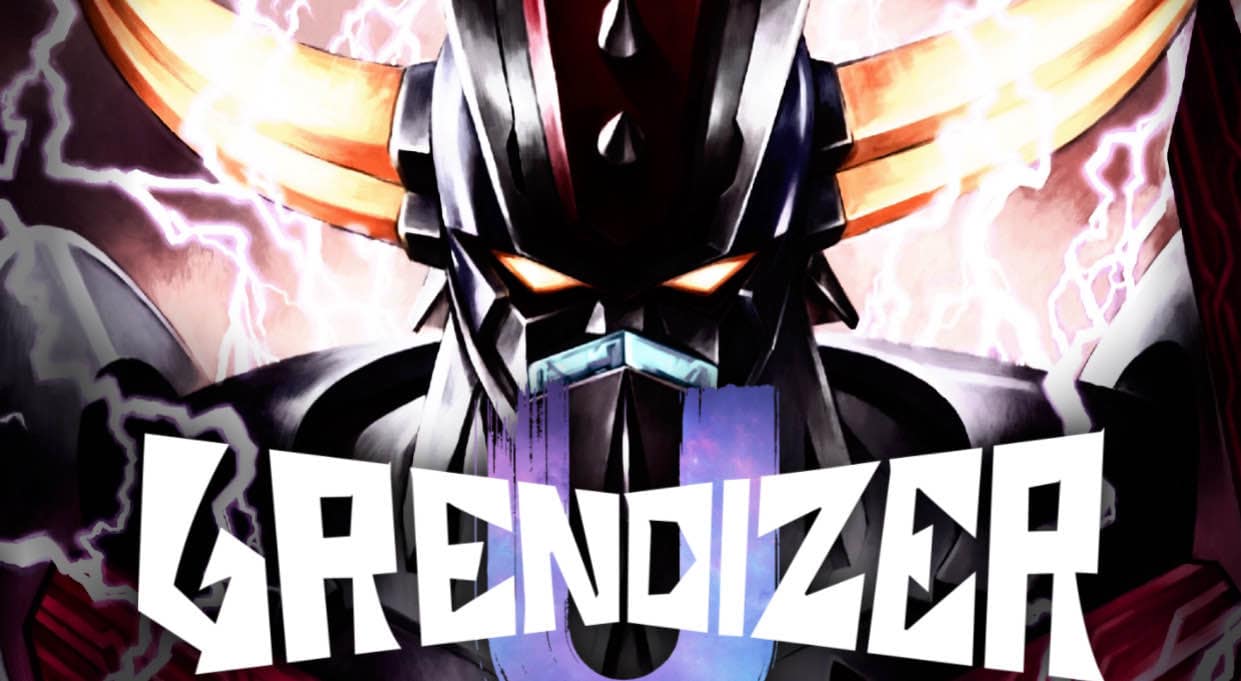In July of 2024, Tsuburaya premiered a new Ultraman show following the success of Ultraman Blazar. Ultraman Arc centers around a young man named Yuma Hize and his imaginary hero from his childhood, Ultraman Arc. Arc’s mission is to protect the fictional city of Hoshimoto, the Earth, and even Yuma from terrestrial and extraterrestrial threats by using the power of his and Yuma’s imagination.
Yuma is a rookie for the show’s defense force, the Scientific Kaiju Investigation and Prevention center (SKIP). SKIP’s duty is to identify Kaiju (Japanese for strange beasts or monsters) that appear, ascertain their threat levels, and assist civilians with evacuation while the Global Defense Force (GDF) deals with the Kaiju. Working alongside Yuma is Rin Natsume, the team’s expert programmer who acts as Yuma’s senior. Leading SKIP is Hiroshi Ban, a geologist and a proud father. Fun fact: he is played by Koichiro Nishi who previously played as Ryouga Hakua or Aba Red from Toei’s Bakuryu Sentai: Abaranger.

Joining SKIP’s ranks after Yuma is Shu Ishido, an investigator from the GDF who deals with Space Kaiju and aliens. Assisting and cheering on the team is YouPi, SKIP’s A.I. powered robot that can perform various tasks depending on the situation. Together with SKIP, Yuma and Arc work as one to defend Hoshimoto city from emerging Kaiju or alien forces that originate far from our solar system.
This show has been highly regarded as of recent due to having a decent storyline and having each episode engage with the viewers. Some, including myself, were worried that it wouldn’t hold up on its own like Blazar. However, it didn’t need to be so serious, action-packed, or anything like its predecessor. In fact, the overall lighter tone, the theme of imagination, the cast of Kaiju, and the way each episode had their own surprises were enough to make the series enjoyable to watch. I found myself during the show’s run eagerly anticipating what the next episode was going to be about, and I was entertained each time.
The tone of the show is similar to other Ultra shows such as Ultraman Cosmos, Ultraman Max, and Ultraman R/B. Arc’s light-hearted tone gives the viewer a friendly feeling where even with Kaiju showing up, Ultraman Arc and SKIP are there to save the day and give everyone a fun time and a good laugh. This is possible thanks to the characters. Yuma and his friends are all friendly and supportive to one another. Even the serious and logical Shu isn’t exempt as he has his funny moments, especially if coffee is involved.
This show focuses on imagination, making it one of Yuma’s best traits. As a child, he had an imaginary hero that he drew constantly. As it turned out, that hero was Arc who saved him when the Kaiju first appeared on his Earth. Despite losing his parents in the disaster, Yuma held on and moved forward with his imagination. In fact, Yuma’s imagination is what helps Arc save the day in each episode. In every episode, Arc’s finishing move is different depending on the situation. His signature Arc Finalize, an energy beam he fires by crossing his arms in a ‘+,’ can be fired at different concentrations or even wavelengths. With that level of creativity from Yuma, Arc can unleash his imagination with different applications of his abilities, techniques, and armors.

Arc dons 3 types of armors in the show. Each of them originated from Yuma’s childhood sketches. The Solis Armor is a solar-based armor that can help Arc endure blows, and is capable of delivering fiery punches to the toughest of Kaiju. The Luna Armor is a lunar-based armor that grants Arc extraordinary speed, and part of it can act as a long ranged weapon like a boomerang or frisbee. The third armor, Galaxy Armor, is Arc’s most powerful armor and is only called for when the situation is dire.
These sets of armor are necessary for Arc as Hoshimoto City is prone to Kaiju attacks. Whether they come from the very Earth, the ancient seas, or beyond the stars, Ultraman Arc and SKIP have a variety of Kaiju to face. As with previous entries in the franchise, Ultraman Arc has a mix of new Kaiju, and returning Kaiju not just from classic Ultraman shows, but even from its predecessor, Blazar. Each Kaiju that shows up in each episode is unique or a blast to see return to the franchise. The most notable new Kaiju from Arc include Digelos and Monogelos, Shagong, Nezutron, and my personal favorite, Livyjira. The some of the returning Kaiju from other Ultra shows include Kanegon and Pagos (Ultra Q), Neronga (Ultraman 1966), Noisler (Ultraman 80), Bazagna (Ultraman Blazar), and even King of Mons (Ultraman Gaia) who hasn’t been seen since Ultraman Gaia: Battle in Hyperspace.
One thing to note from this series is a very small number of Seijin (Japanese for space men or aliens). There are a total of 3 alien characters in Arc, those being Alien Croco, Zangill (Ultraman Blazar), and Sweed, the show’s main antagonist. However, I had no issues with this as the main threat for the show was focused on the Kaiju just like in Blazar. But unlike Blazar, they last more than just one episode. Alien Croco does have an appearance near the end of the show, and Sweed becomes an important character midway through the show. Interestingly enough, the show has a giant alien robot named Givas. Givas first appeared as an enemy, but in the next episode, he is actually a friend that lost his mission.

If there is one thing that stood out to me in Ultraman Arc, it’s the way each episode grabs the viewer’s attention. Every episode I’ve watched has entertained me, saddened me, and satisfied me. Blazar had something similar to that effect, although with a more serious tone. In Arc, it somehow gets serious despite its lighthearted tone. For example, there is an episode with Kanegon being a cryptocurrency mascot. That type of plot is definitely the most outlandish thing I’ve heard in an Ultraman show, but it still got me laughing!
In the next episode, we get to see a friend of Yuma’s from middle school who is secretly communicating via radio with an alien girl from across the galaxy. However, instead of being an invader story like with previous Ultraman media, the alien girl is actually speaking from a dying planet that was minutes from total environmental and societal collapse. That reveal, and how it ended got me right in my heart and obliterated it. I felt so depressed after that episode. Not since Ultraman Mebius did I ever feel so much heartache.
But it does get better as the show progresses. The episode with the return of King of Mons is by far my favorite episode. The episode revolves around a young woman who is overwhelmed and overworked from her job and her life in general. She finds a red sphere that can grant her any wish and ends up summoning King of Mons to unleash wrath upon the society that crushed her own soul. Very extreme, but some young adults watching this episode who are in similar situations like her can relate to her resentment against the world albeit to an extent. Initially, Arc had trouble fighting King of Mons, but when the woman regrets her actions, she wishes for help. And the one who answered? Givas! Arc and Givas’ teamwork against King of Mons had the best choreography and effects, and is easily my favorite fight from the show.
Moments like these are how I kept getting entertained by Ultraman Arc. A show with episodes that have unique ways to get the viewer hooked to the end is indicative of how good it is. Speaking of the end, the finale was honestly one of the best I’ve seen in new Ultraman shows. Not only was the final battle amazing to watch, but the whole episode just seems worth watching after going through the series. A lot of Ultraman series finales I tend to just care more for the final battle. But some final episodes have me watch their entirety. Arc’s finale is among them.
Other factors that assist the show’s success are the music, the characters, and the effects. The soundtrack was pretty decent to have in the background, especially Arc’s theme. Arc’s battle theme sounds similar to My Hero Academia’s “You Say Run” theme, but with more energy, and a chorus that sounds purely Ultra. Arc’s opening theme song is pop driven but undeniably catchy. It just helps the viewer feel excited when delving into this show.

The cast of characters we have in Arc, whether the main cast of SKIP or side characters, have their own quirks that make them fun to watch. Just like with Mebius, there doesn’t seem to be a character I didn’t dislike that much. Sweed was close, but she is written to not be liked. My favorite character isn’t Yuma or even Arc for that matter. It’s SKIP’s leader from Abaranger. As a geologist, I relate to Ban the most as he studied both geology and a bit of paleontology. I loved how he gets to use his geologic background to help solve problems during missions. The best use of this was episode 5 when he and his paleontologist mentor dealt with Livyjira’s awakening and salty lake.
The special effects were also a nice touch to the series. Like with many new generation Ultraman shows, many of the effects are used in the battle sequences. These effects are best seen whenever Arc uses an attack with his imagination. In the first episode, Arc uses a barrier of light to protect himself from Shagong’s attacks. After that, he takes his barrier and slams it at the poor thing like a WWE wrestler! Even going as far as breaking the barrier and using the large pieces against Shagong. The effects seen were definitely a testament to how far Tsuburaya Productions has come in terms of effects. Taking advantage of Arc’s unique attacks lets us see how versatile the effects can be.

Despite all of the good things about Arc, I have to address a couple of critiques I have about the show. The first is the space parasite first shown in episode one; the Oo-ze. These supposedly latched themselves on the Monohorn, Monogelos’ detached horn, and have spread underground. They then latch onto Shagong, increase his size, and make him go on a rampage. The first episode alluded that these were going to be some kind of environmental threat. But as the show went on, the Oo-ze were seemingly never prevalent in the show again. I may have misremembered if they haven’t made another appearance, but it just comes to show that they didn’t have much of a spotlight.
Another critique I have is the intention of Arc’s real enemy. Without spoiling certain details, Arc was originally sent to Earth to protect it from an operation caused by an enemy known as Ze Su. The operation involved destroying Earth so it can save the galaxy he and Arc came from. Arc then sealed the gateway to Earth so no harm could come from Ze Su’s plan. But, Ze Su sent in Sweed to stop Arc and open up the seal so Earth’s destruction can happen for the sake of his home galaxy.
On paper, it sounds like a good conflict. However, Ze Su’s persistence in destroying Earth is kind of flawed. You would think that Arc’s interference should’ve made Ze Su choose another location to destroy. Besides, he was warned about life on Earth. I understand that he’s a villain and does not care about the outcome. But, instead of insisting on Earth’s destruction he could just destroy a different planet, perhaps an uninhabited planet. His plan of destroying Earth for the sake of the galaxy has the theme of “the needs of the many outweigh the needs of the few.” Yet, his persistence on destroying Earth to save his home despite being warned and having the option to destroy a different planet just ruins it.
One final critique I have for Arc was Yuma’s character being similar to other previous Ultraman protagonists. The loss of his parents is similar to Daichi Ozora from Ultraman X. Daichi also lost his parents from a disastrous event, and that shaped his character in the show just like with Yuma. Yuma’s personality is also similar to Kengo Manaka from Ultraman Trigger. Both of them were rookies with optimistic and forward looking personalities. Even their catchphrases were similar.
In Arc, Yuma had a tendency to say “Run, Yuma!” as a way to look toward the day and continue despite how things look. In Trigger, Kengo always said “Smile, smile!” to his friends to lift their spirits up and to think positive no matter what situation they’re in. These similarities can be complementary to one another, but I cannot help but find Yuma’s origins and personality somewhat unoriginal. But to Yuma’s credit, I can definitely relate to his optimistic and forward thinking personality. In hard times, it’s best to look forward to what the future may bring even if it looks bleak.
In short, Ultraman Arc is an entertaining Ultraman show to watch as of recent due to its lighthearted tone, the focus on imagination, a wonderful cast of characters and Kaiju, the way each episode was written, and so much more. I highly recommend Arc for those that want to get into Ultraman, fans that want to get back into the franchise, and those that want a unique sci-fi experience. This show was a treat to watch last year and earlier this year. I also recommend watching from start to finish because I found the duration and pace of the show pretty straightforward. Ultraman Arc is undoubtedly an imaginative piece of Tokusatsu media.





